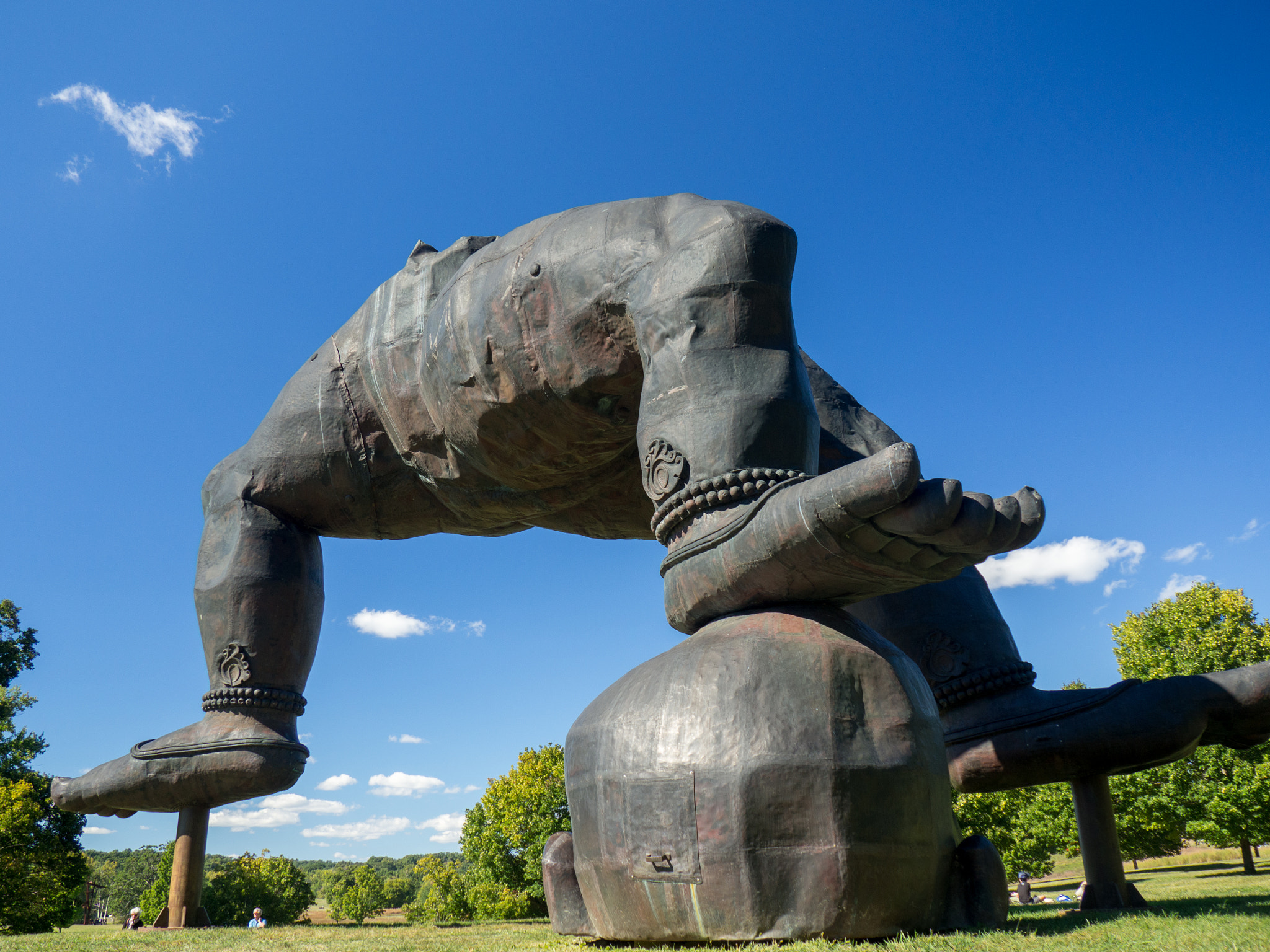Review of the Storm King Art Center
September 21, 2021

Zhang Huan's "Three-Legged Buddha" statue.│Photo Credit: Eldan Goldenberg via Wikimedia
by Jack Curley
Let’s be honest, museum visits aren’t quite what they used to be. Covid has of late made art museums and other cultural destinations too much of an adventure. Masking and distancing, combined with an overall sense of uneasiness, can make it difficult to fully appreciate the wonders of a favorite work of art. Our group of four practiced museumgoers decided that this summer called for a different approach, but where to turn? The solution to our culture quest awaited us an hour north of Manhattan, at Storm King Art Center. Why Storm King? Because what better time than now to visit a museum without walls?
Located just off Interstate 87, a bit more than a three-hour drive from greater Boston, Storm King is primarily an outdoor sculpture museum featuring permanent and special exhibits, both large and small, displayed across five hundred acres of hills, meadows and ponds. Founded in 1960, the museum is home to about 115 works, each one “sited with consideration of both its immediate surroundings and distant views.”
Entering from Storm King’s South Parking Lot, we were greeted by the eye-popping sight of architect Mark di Suvero’s massive Frog Legs (26 feet tall), mounted at the top of a hill overlooking a sprawling field where three additional di Suvero sculptures, Neruda’s Gate, Mozart’s Birthday, and E=MC², were positioned about a quarter-mile apart. More revelations awaited, among them Zhang Huan’s Three-Legged Buddha, Alexander Calder’s The Arch, and Alexander Liberman’s Iliad. Of particular interest to the author was Maya Lin’s Storm King Wavefield, 240,000 square feet of swelling waves built from only earth and grass. As stated at the museum website: “The seven nearly four-hundred-foot-long waves, ranging in height from ten to fifteen feet, proceed at the same scale as a series of mid-ocean waves.” Lin, famously known as the designer of Washington D.C.’s Vietnam Veterans Memorial, previously created two similar sculptures and has stated that her hope in completing this third and final piece was to “culminate the series with a field that literally, when you were in it, you became lost inside it.” Mission accomplished.
Many amenities were open during our visit, including picnic areas and an outdoor café. The Museum building’s indoor gallery also remains open, though with limited capacity. The Museum store is closed.
Alternatives are available for those not wanting or not able to walk the grounds, including bike rentals and free wheelchairs to use along the many paved paths. Museum-provided driving tours were offered in place of a tram service, which has been cancelled during the COVID-19 pandemic. At the time of this writing, advance tickets were required for all visitors. Please see the museum website prior to visiting to check on the current status.
Despite the rural atmosphere of Storm King’s hometown of New Windsor, much of the area south of the museum is more urban with not many places to spend the night. We opted to stay at the Roundhouse Hotel in Beacon, New York, located on the opposite (west) side of the Hudson River, about thirty minutes away. Once a factory town, Beacon’s downtown has more recently been transformed into a tourist-friendly spot with plenty of shopping, art galleries, and restaurants. At the time of our visit the Roundhouse had a robust Covid prevention plan in place.
Alas, rising mid-day temperature and humidity caused us to depart Storm King without the opportunity to view all of the pieces on display. We hope to pay a return visit in the not-too-distant future for a second chance to view more grand-scale plein air sculpture in a truly majestic setting.